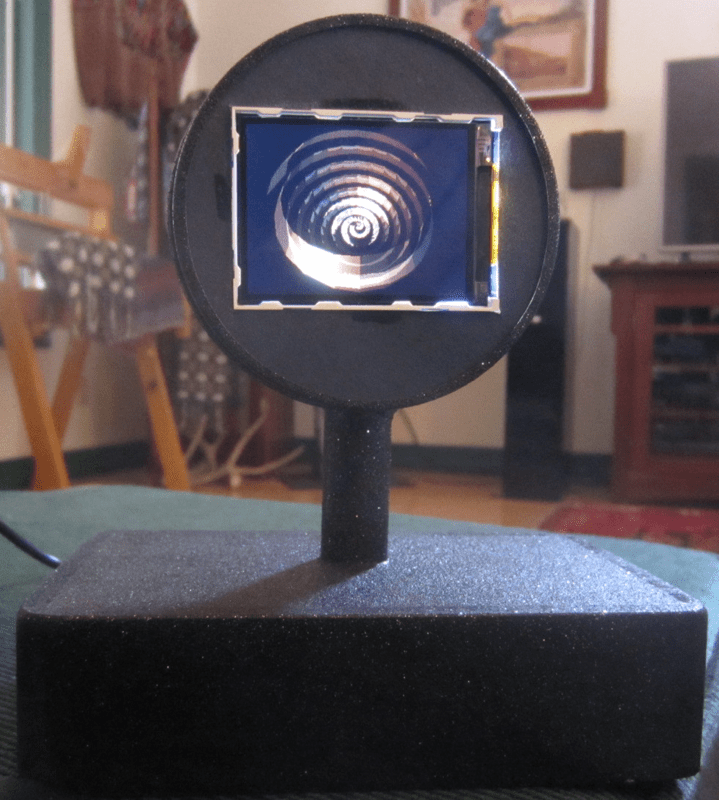A canceled project left [Craig] with six Raspberry Pi based devices he calls “Minions”. A minion is a Raspberry Pi model A in a small enclosure with an Adafruit 2.2″ 320×240 SPI LCD. The LCD lives in a lollipop style circular housing above the base. [Craig] has found a use for one of his minions as a desktop raytracer.
The Raspberry Pi is quite capable of running Persistance Of Vision Raytracer, or POV-Ray. POV-Ray started life as an early PC based raytracer. Created as a port of an Amiga program called DKBTrace, which was itself a port of a Unix raytracer, POV-Ray first was released in 1987. For the uninitiated, raytracers like POV-Ray literally trace rays from a light source to an image plane. As one would imagine, the Raspberry Pi’s little ARM processor would take quite a bit of time to raytrace a high resolution image. However, when targeting a 320×240 LCD, it’s not half bad.
[Craig’s] minion is running his own software which he calls ArtRays. Based upon a setup file, ArtRays can render images from several sources, including the internet via a WiFi dongle, or a local SD card. Rather than walk through the setup and software install, [Craig] has provided a link to download a full SD card image to build your own Minion. It might be worth experimenting on your own first though, rather than killing his server with a 1GB download.
We’re glad [Craig] has found use for one of his minions, now we have to see what he’s done with the other five!

















The Raspberry Pi has is quite?
Sorry, but this sentence does not make any sense.
It’s a direct quote from the above post.
You are not supposed to “read” the posts. You have to skim over it, check the links, watch the video if available (only half!) and then go straight to the comments. Dont you kids learn anything in school these days? Geez…
Hackaday staff’s philosophy in a nutshell
Incomplete edit… The Raspberry Pi has is quite capable of …
Comment edit would be nice… intended to say that the original sentence was probably something like “The Raspberry Pi has the capability to … ” and then Adam changed his mind about the wording but didn’t take out the original verb…
You pretty much got it. The only part you missed was me proof reading it twice and missing it both times. Now hopefully we’ll get some comments on the actual project, rather than my typo :)
fixed in the post – good catch.
Random pedantry – the usual way of ray-tracing is from the image plane back to the light source.
Anyway, writing ray-tracers is fun, and a good introduction to 3D vectors, transforms etc. Plus, you get pretty pictures that are difficult to produce otherwise.
Impressive hack, didn’t even know this was possible on raspi. Thanks for the link HAD.
Reminds me of the POV render farm I built from random unwanted UNIX machines in college. A head node waited for a tarball to appear in a directory exposed by its FTP and NFS servers. The render clients had unique job queue directories on the head node’s NFS share. If the head node found a new incoming job, it would round Robin to the next free client and drop the job in its directory. The client would keep the archive there until it was done, replacing the tarball with a bitmap to return the result and indicate it was free for another.
It never amounted to anything more than a toy, since the SPARCStations and DECStations I accumulated weren’t remotely powerful enough to match a desktop PC of the day.
A pi should be a lot faster than the Amiga that it originally ran on.